
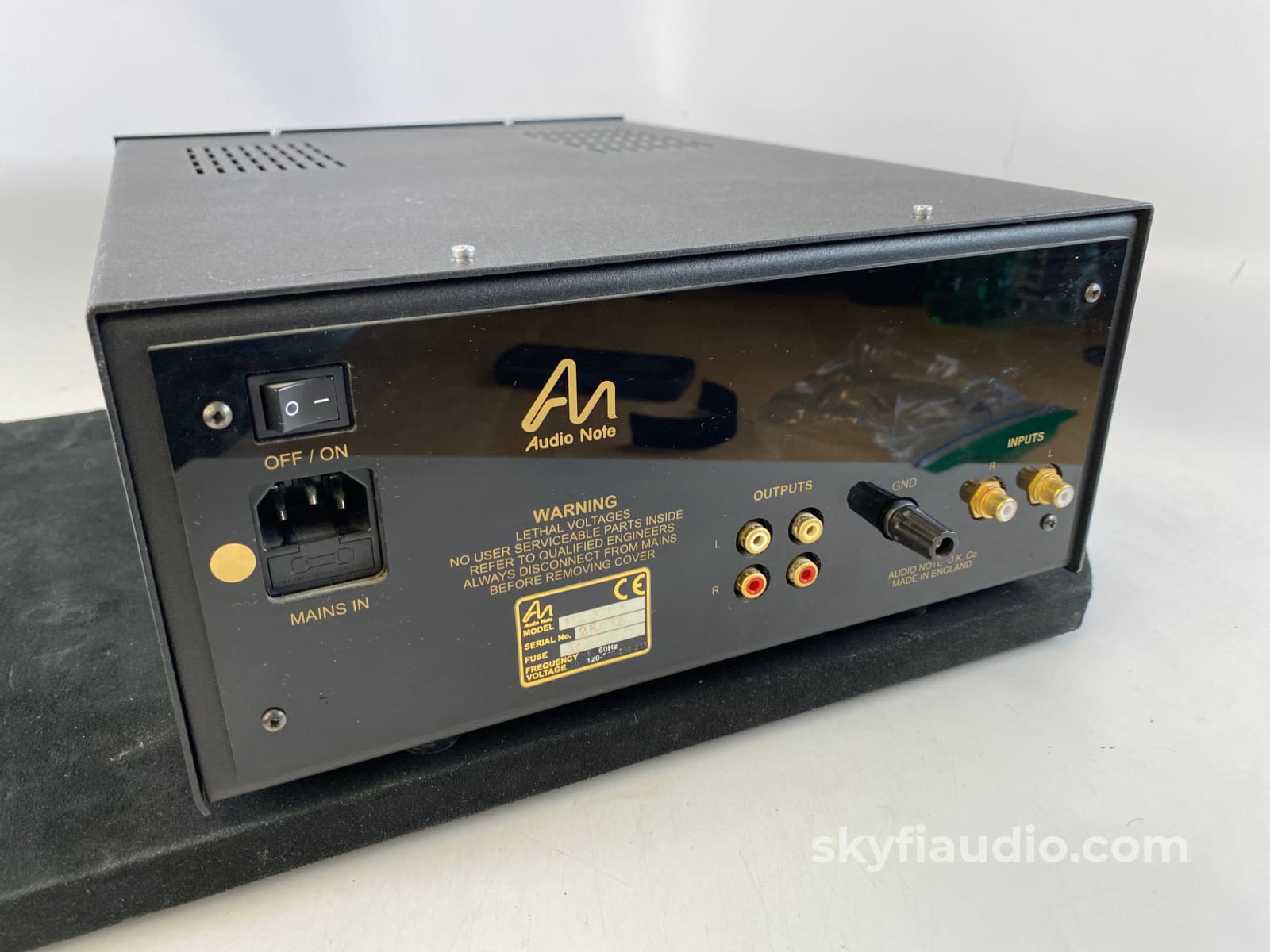
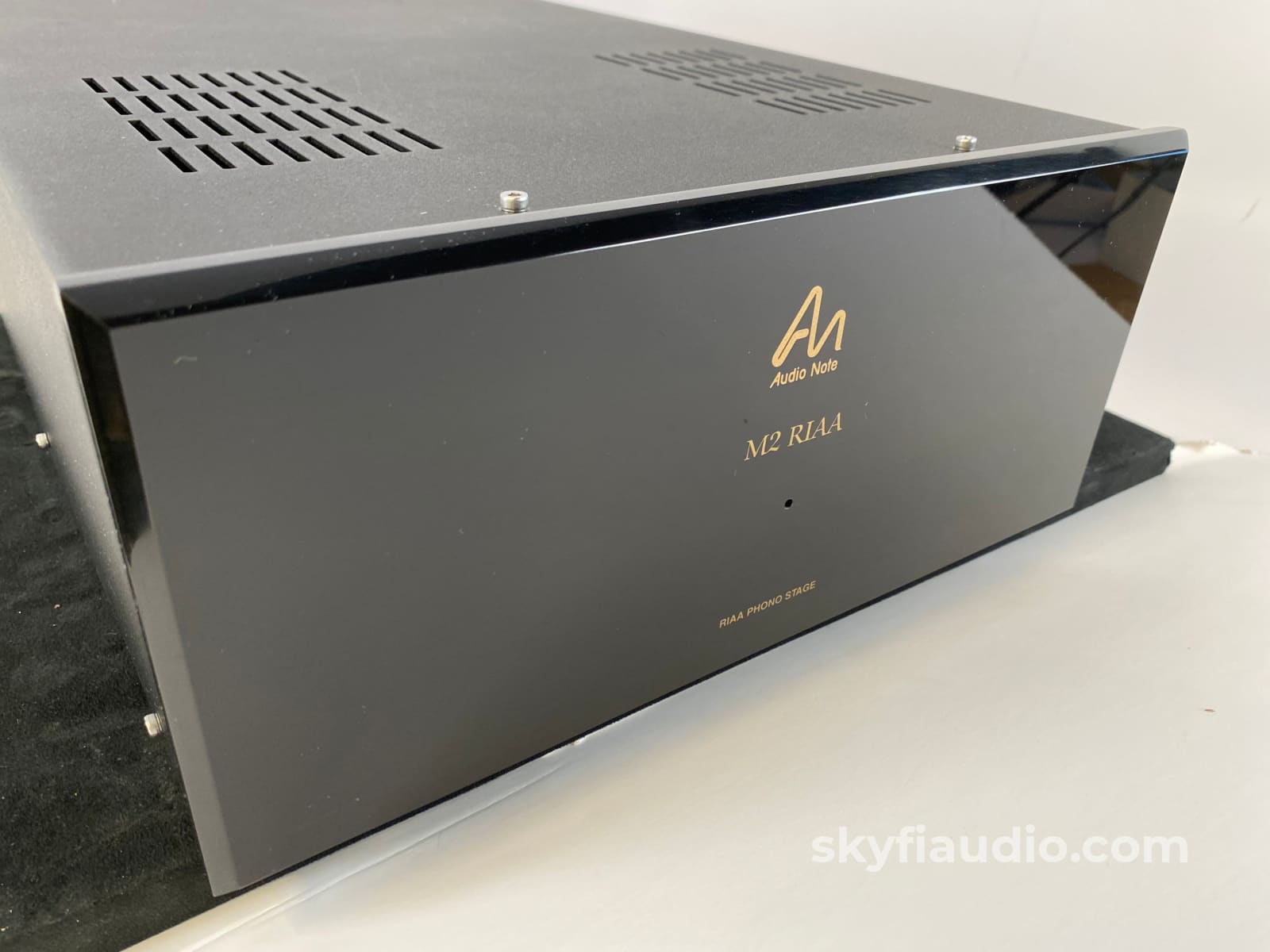
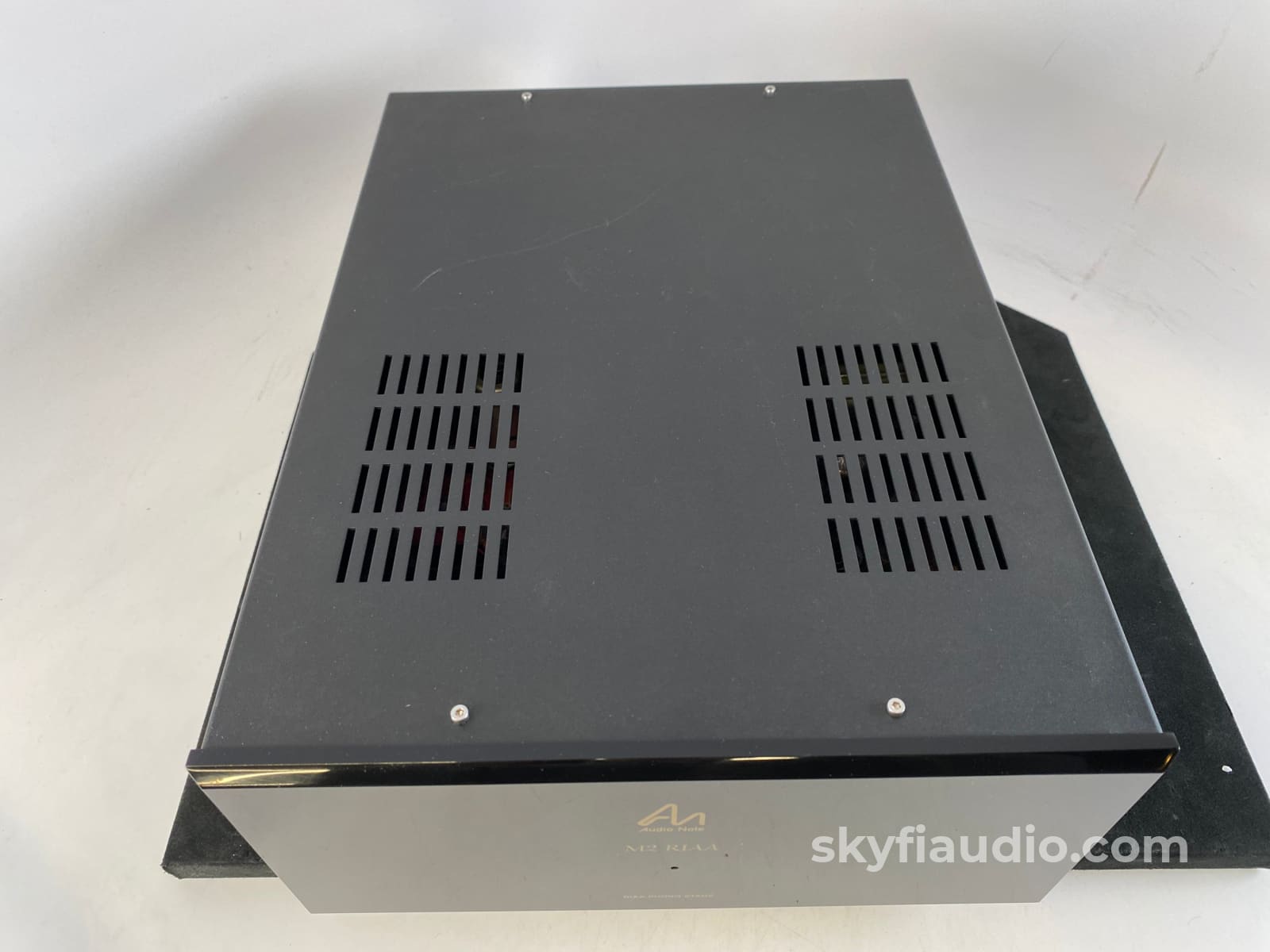
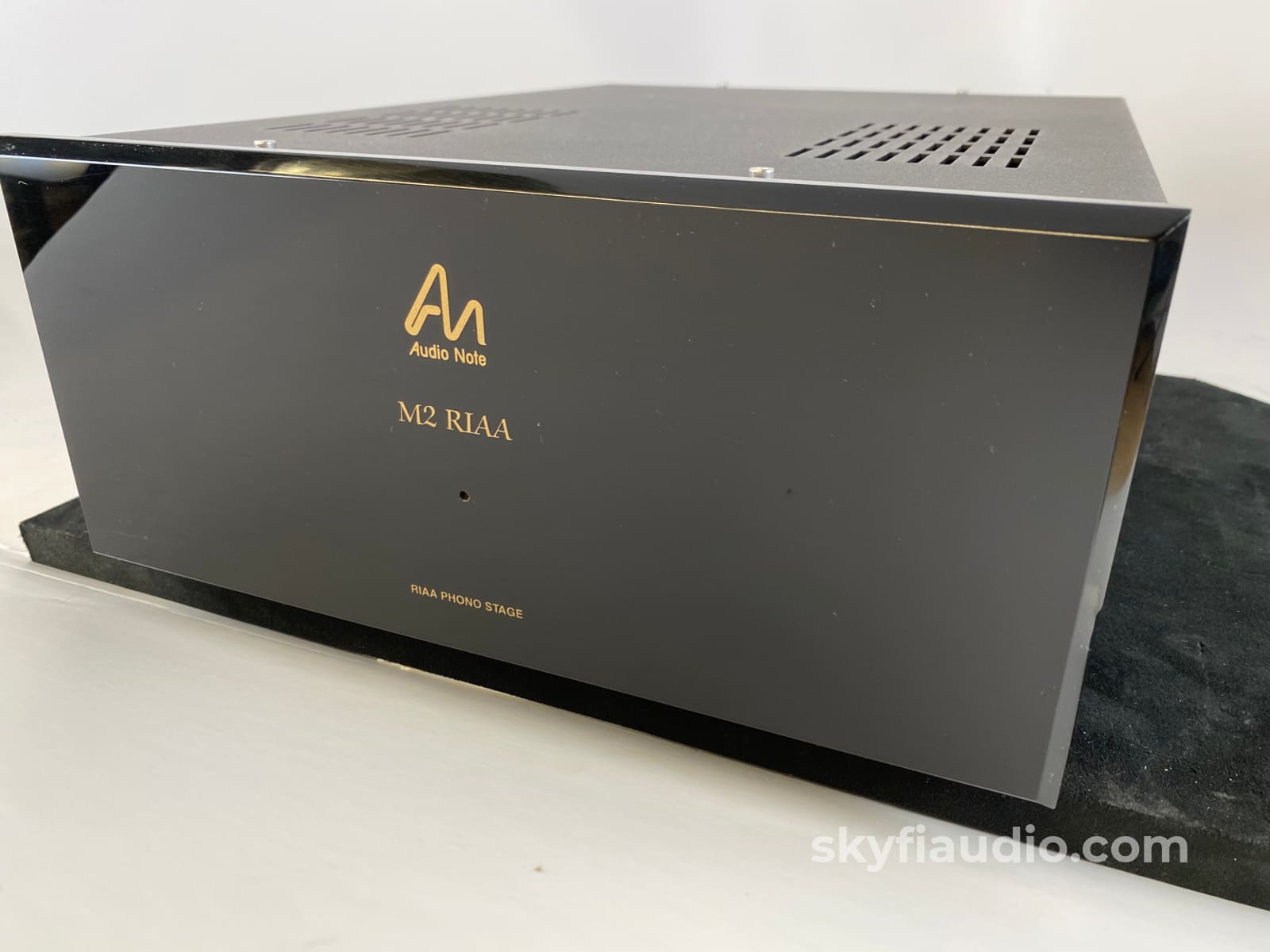
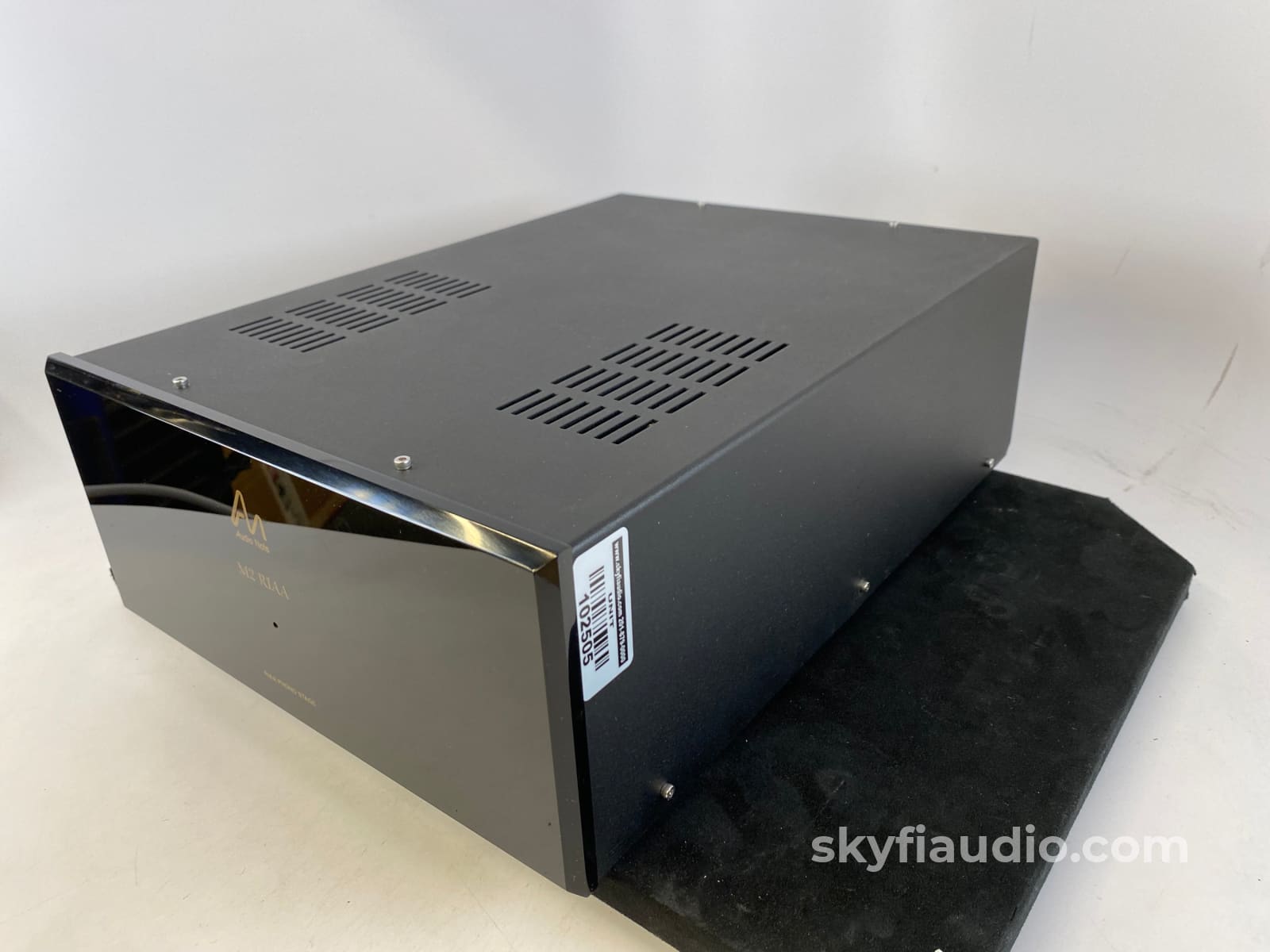
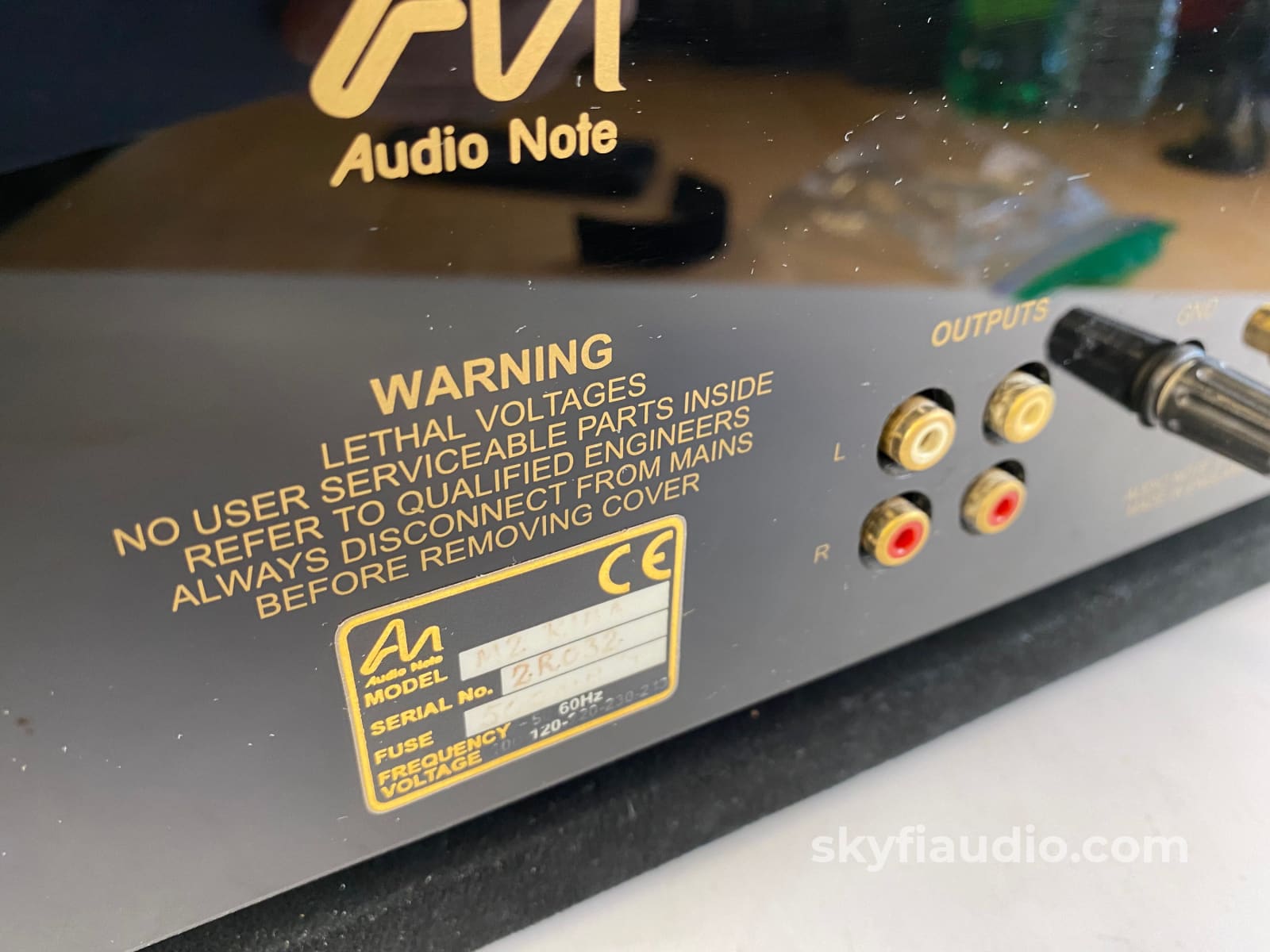
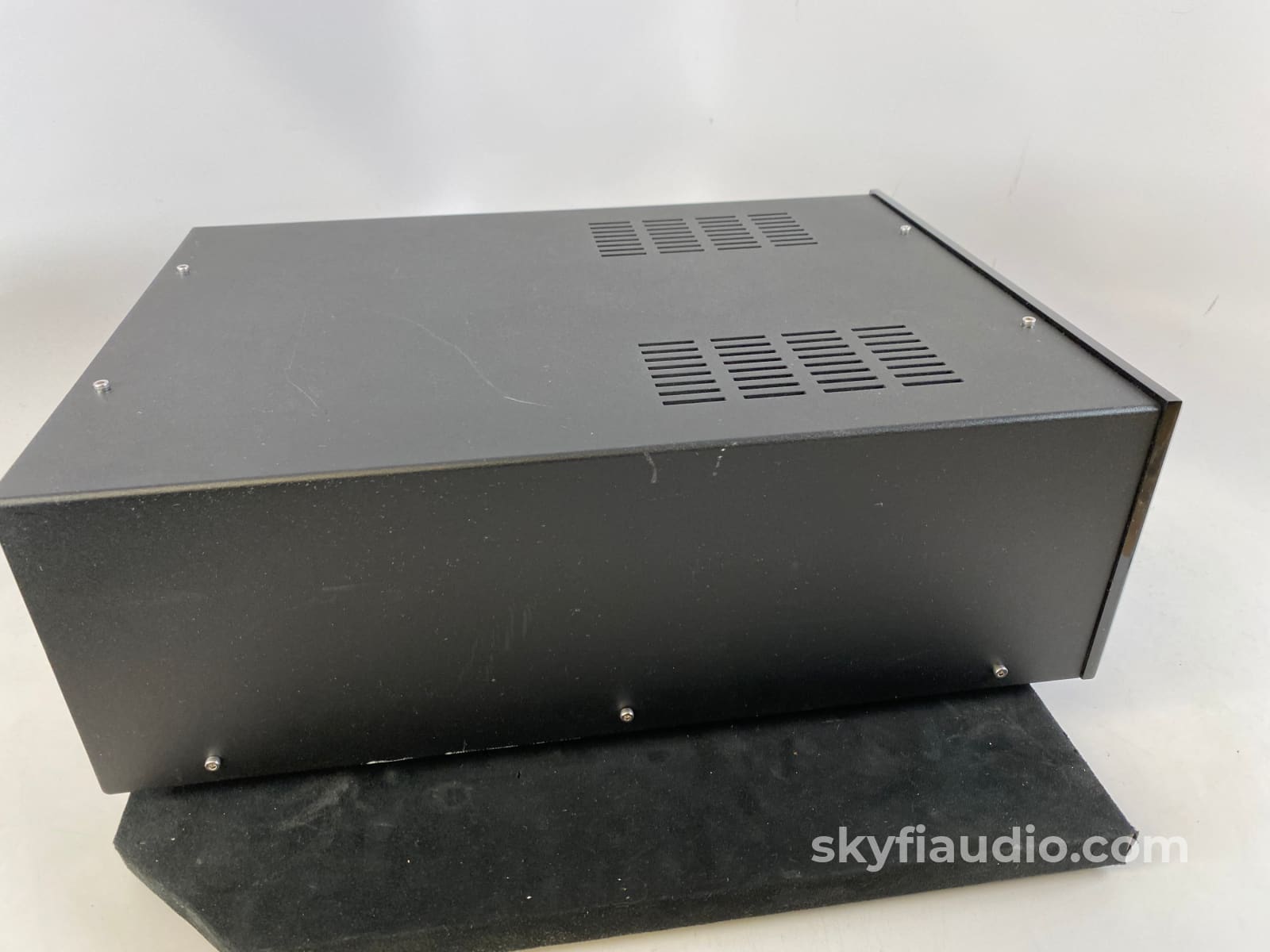
Audio Note M2 RIAA Phono Preamplifier
Free Shipping on Most Electronics - Excludes Speakers and Items Requiring Freight - Contiguous U.S. Only
Pickup currently unavailable at SkyFi 479

Audio Note M2 RIAA Phono Preamplifier
SkyFi 479
479 South Broad Street
Glen Rock NJ 07452
United States
This is the first time we've see this model in our shop and we were super impressed with how it measured on the bench.
Well-built and utilizing tubes in the amplification section as well as the power supply.
In good cosmetic condition throughout and tested and working perfectly on our bench and listening lab.
From HiFi Review:
This is a classic vacuum tube design with no feedback, passive correction rectifiers and power.
The entire audio path built just a pair of double triodes in half for each channel. The input signal is amplified by a lamp ECC83 (or its analogue 12AX7), after it is enabled correction circuit RIAA, and the output is worth ECC88 (6DJ8) with the anode load.
Cathode followers Peter Kvortrup does not recognize, as they present the local operating system. This causes a fairly high output impedance corrector about 5 ohms, which in turn may require careful selection of the interconnect. All interstage capacitors - branded Audio Note, ie paper/oil in a copper casing.
The power supply after the rectifier (octal rectifier 6X5) and the throttle has a stabilizer triode/pentode ECL82. Food Incandescent also stabilized - to get rid of the background. Corrector could be collected in the case of smaller volume, but then would not be able to spread the signal path and power supply at a distance, eliminating harmful interference.
The connection only heads MM type, which is also part of the ideology Audio Note. Kvortrup believes that amplify the signal from the moving coil should be exclusively through step-up transformers, which his company also produces a sufficient range. Accordingly, the input jacks only two, but the weekend - four, and all of them are branded, silver-plated AN-CS.
The cables to the amplifier, really had to choose. The most neutral in our system have been Musical Wire Cadence Signature RCA, with them and listened.
Audible Audio Note's handwriting immediately recognizable. Checker is focusing the listener on some individual nuances and creates an unusually coherent and harmonious picture.
And as soon as you notice the complete absence of synthetic and mechanistic sound, it seems to be absolutely open and relaxed. It is not quite devoid of powerful energy and speed, which for me was a surprise to some. Always believed that transistors with high internal resistance - and such is the ECC83 - make a sound overly tube, ie without the "meat" and a weakened dynamics. M2, may not be the best choice for the club DJ, but most of the really musical genres he regains absolutely adequate.
And most importantly, that the corrector passes it to music, and not a set of sounds. And only very little cause for criticism - tinted middle, which is why sometimes vocal timbre dominates the overall picture. However, lovers of opera, which include himself Kvortrup is likely that quality will like.
Click below to add our recommended matching cables from Kimber Kable, all brand new as SkyFi is an official Kimber dealer.
Kimber Kable KS PHONO, Flagship Tonearm Interconnects (Pure Copper)
Kimber Kable - RCA Interconnects
And from the Owner's Manual (linked below to download)
Congratulations on your purchase of the Audio Note (UK) M2 RIAA phono stage.
It has been specifically engineered for sonic performance rather than technical specification, and fulfills all Audio Note (UK) Level 2 criteria: -
Pure Class A operation
Zero negative feedback
Single Ended circuit topology Valve rectification
Materials and component quality
It is well known that the accurate reproduction of music, not just sound, requires the purity of the incoming signal to be preserved. It is therefore not difficult to conclude that, in order to achieve this goal and to retain the musicality of the original performance, the complexity of the circuitry itself must be kept to a minimum.
In response to this, the M2 RIAA phono stage uses a single-ended, zero feedback circuit topology. This is simply the most linear design possible, demanding pure Class A valve operation and removing the need for a phase splitter, which introduces unnecessary crossover distortion.
In contrast to the majority of the audio industry, we design our circuits with the aim of minimising non-harmonic and time base anomalies, rather than producing vanishingly small harmonic or low intermodulation distortion measurements. These non-harmonic amplitude and time base distortions have a highly perceptible and adverse affect on the signal waveform, and it is far more important to address these factors than participate in the increasingly irrelevant numbers game that chases „perfect measured response‟.
As a result, the M2 RIAA phono stage was designed for maximum linearity and minimum transient distortion, and avoids the need for detrimental „corrective‟ measures, such as inherently error-prone feedback loops.
The M2 RIAA phono stage features an ECC83 and 6DJ8 Moving Magnet phono stage, and a valve rectified power supply incorporating a 6X5 and an ECL82.
Technical Specifications
INPUT IMPEDANCE:
47 K Ohms - Phono
INPUT SENSITIVITY:
126 mV for 1V Output
OUTPUT IMPEDANCE:
< 10 Ohms
TUBE COMPLEMENT:
1 x 6DJ8
1 x ECC83
1 x 6X5
1 x ECL82
FUSE RATINGS:
1A anti-surge (110 / 120V supply)
500mA anti-surge (220 / 240V supply)
MAX. POWER CONSUMPTION:
55 Watts
UNIT WEIGHT:
15.43 lbs
7 kg
UNIT DIMENSIONS:
5.51" H x 11.61" W x 17.72" D
140mm (h) x 295mm (w) x 450mm (d)
MAINS INPUT:
AC 100-120V / 220-240V 50/60Hz
NOTE:
Due to Audio Note (UK)'s ongoing research and development program, specifications are subject to change without notice.
Audio Note M2 RIAA Phono Preamplifier - Owner's Manual
The SkyFi Testing Process for Preamplifiers:
We start with a visual inspection of all internal components to make sure there are no signs of stress or aging. Capacitors are checked for telltale sings of bulging or leaking, resistors are checked for signs of overheating or cracking, and transistors are checked for signs of stress or damage. Special attention is paid to the power supply which is the most common source of failure for preamps. We then power up the unit and run a simple 1k sine wave while monitoring the low voltage output on an oscilloscope for signs of distortion or noise to get a baseline.
At this point we will lubricate and clean all switches and potentiometers (that are not sealed) with a high quality contact cleaner, and then re-test all functions for any signs of noise or scratching.
Final testing involves putting actual music through the preamplifier. We have learned over time that some issues are only noticeable to a trained ear while listening to a familiar source material. Our test bench has reference vintage KEF speakers that we are super familiar with which will quickly reveal any discrepancies. Some preamps will then move into the listening room where they will be tested with our in-house reference system.
|
Item |
Included |
|
Original Box |
No |
|
Manual |
Online |
|
Remote |
Not Applicable |
|
Cables |
Yes - Power |
|
Physical Condition |
8 |
|
Working Condition |
10 |
Choose options








